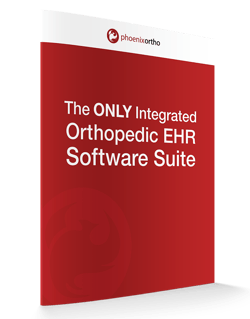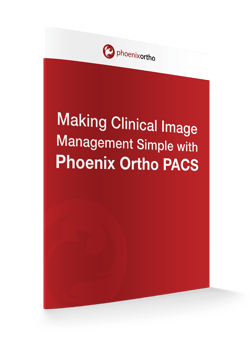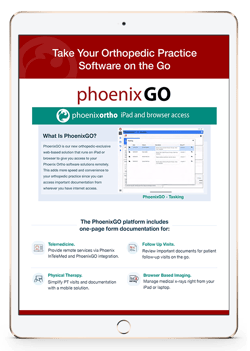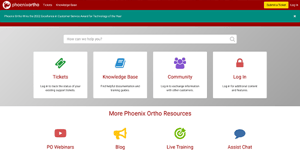It is a well-known stereotype that many doctors—especially older ones who were trained in traditional record-keeping and patient charting methods—do not like to use complicated software such as Electronic Health Record (EHR) solutions.
However, as noted by The Office of the National Coordinator for Health Information Technology, “over 4 in 5 of all non-federal acute care hospitals had adopted a Basic EHR with clinician notes” and “78% of all office-based physicians reported use of a certified EHR.” So, the stereotype does not seem to hold water. Yet, while a nearly 80% adoption rate sounds impressive, that still means that one in five physicians is not using an EHR software.
Why Aren’t Some Doctors Adopting EHR Software?
A potential reason why some doctors resist using an EHR solution for their own practices is a negative impression of the software. In one article titled Why Doctors Don’t Like Electronic Health Records, Richard L. Reece, a retired pathologist, states that “It is the hassle factor and the often prohibitive cost of hiring staff to enter the data and to comply with new rules and regulations” that often plays a role in the decision not to adopt the EHR process. Some other factors that Reece cited as being obstacles to EHR software are that they:
- are sold by so many companies—more than 100 at present—that no one knows how to separate the good from the bad, or figure out which will survive.
- slow productivity.
- show negative investment returns.
- don’t speak to one another.
- distract from patient time.
- require total reorganization of practices.
- conceal a strategy for monitoring, controlling, and dictating practice activities.
- can be misused or hacked to invade privacy, reveal sensitive information, and threaten the security of patient and doctor alike.
- raise practice costs.
*the above bullet list is recreated from Richard L. Reece’s MIT Technology Review article, as it existed on 02/01/19.
All of the above issues may be legitimate concerns in any practice when it comes to integrating a new solution from an EHR software vendor or technology company. But, the truth is that a well-optimized EHR solution can be a massive benefit to a practice—helping to create more efficiency, save time on paperwork, and reduce errors that lead to unnecessary re-testing or lost image files.
But, finding an EHR software for doctors that hate technology is easier said than done. Additionally, while the Electronic Health Record system your clinic uses should be simple enough for the “Fred Flintstones” in your practice, it also needs to be robust and flexible enough to satisfy the tech-savvy “George Jetsons” in the clinic. However, EHR software companies don’t always make their software so easy to use.
What to Look for in an EHR Software for Tech-Hating Doctors
If you are considering an EHR solution for patient charting and other record-keeping and patient interaction purposes, be sure to look for:
- Software Optimized for Your Type of Practice. Many clinics try to muddle through with a primary care-based EHR software when they need a specialty software instead. However, this creates a suboptimal user experience as the software users struggle to deal with extra modules not relevant to what they do. Using an EHR software that is optimized for your clinic’s specialization—such as an orthopaedic-specific EHR for orthopaedic practices, helps to improve the return on investment (ROI) for an EHR solution.
- Software That Helps Automate Note Transcription. In many clinics, doctors recite their notes for a patient visit into an audio recording, then send that recording to a transcription service to create a report that can stand up to legal scrutiny. This takes extra money and time—delaying the collection of revenues from payer organizations. Using an EHR or patient charting software that can translate audio recordings into notes automatically saves time and money.
- Unified PACS Solutions. Many EHR solutions are separate from any picture archiving and communication system (PACS). Even when they have integrations, the data for the PACS and the EHR are kept on different servers, which can lead to problems during image ordering. By choosing an EHR with a fully-integrated PACS solution, clinics that rely heavily on ordered images for diagnosing and treating patients, such as orthopaedic clinics, can make image ordering quick, easy, and consistent. Tech-savvy assistants will appreciate the ease of use, while tech-hating doctors will appreciate that fewer errors will happen in image ordering.
- Convenient Presentation of Important Information. Some EHR solutions try to present too much information to the user all at once, creating a confusing jumble of text that takes time to sort through. When picking between EHRs, it is important to consider how each one presents information to you—and what information is presented. Using a solution that only presents the most pertinent information about past patient interactions helps manage data bloat and speed along the current patient visit. The easier it is to reach this information with minimal mouse clicks, the better it will be for doctors that prefer not to use technology.
- Customizable Presets for Common Diagnoses. If a doctor encounters the same conditions repeatedly, being able to generate a report for that diagnosis with the push of a button can be a massive time-saver. For example, if a sports doctor treats meniscal tears every day, and prescribes the same treatment regimen for almost every injury under that diagnosis, they could easily use a templated report to save time.
- The Ability to Have Multiple Simultaneous Users. Numerous EHR software programs restrict themselves to a single user accessing a patient chart at a time. Being able to have multiple users in the patient charting system at once helps doctors—even ones that hate technology—better coordinate their delegation of tasks to assistants, nurses, and surgical coordinators as necessary. Instead of accessing the patient’s records one at a time, the whole group can review everything at the same time as the doctor delegates tasks.
Looking for these capabilities in an EHR software can help you find a solution that even the most tech-averse members of your clinic’s staff will be able to use (even if begrudgingly) while being powerful enough for the technophiles in the office.
Looking for a top-of-the-line orthopaedic-specific EHR software for your own clinic? Speak with a member of the Phoenix Ortho team today!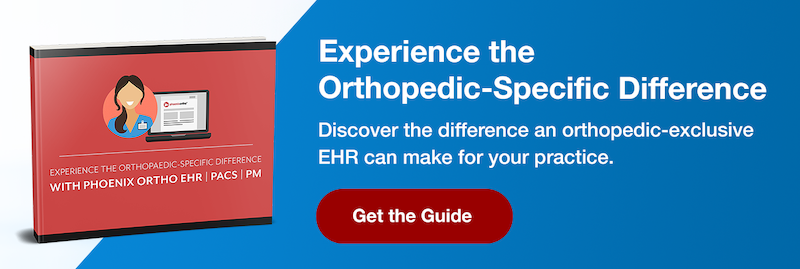
Schedule a 1:1
Get in touch with Phoenix Ortho to learn more about how you can save time, money, and mouse clicks with an orthopedic-specific EHR.





